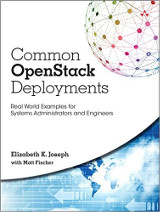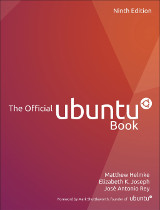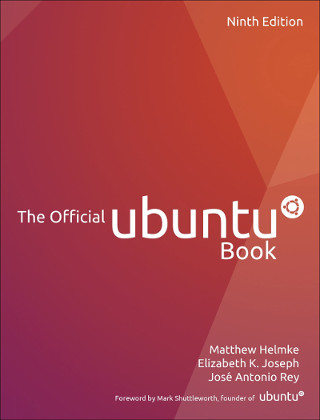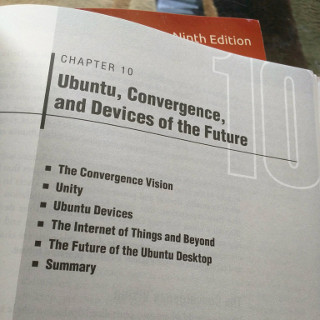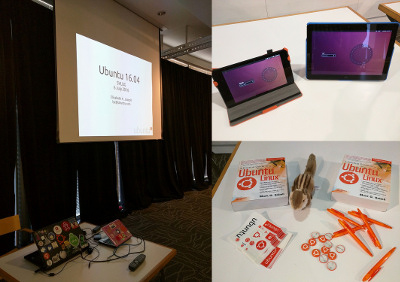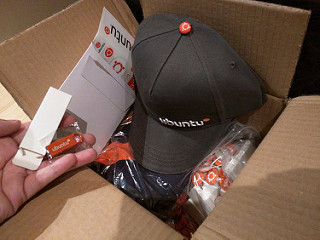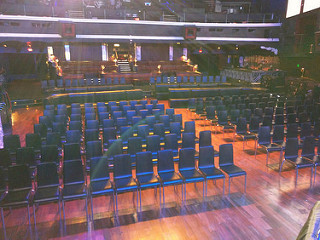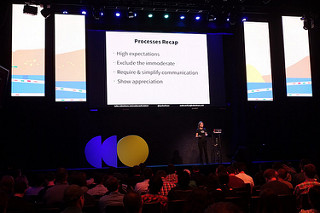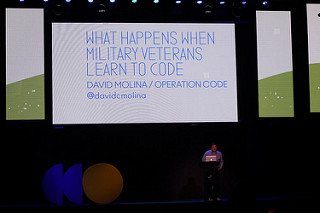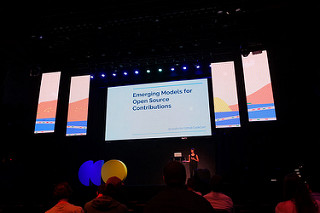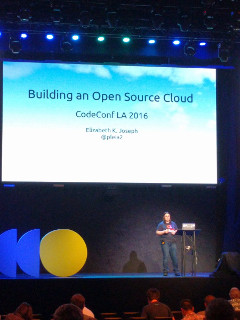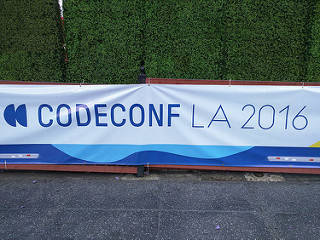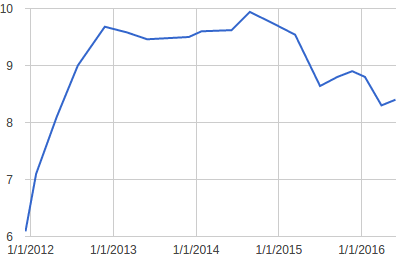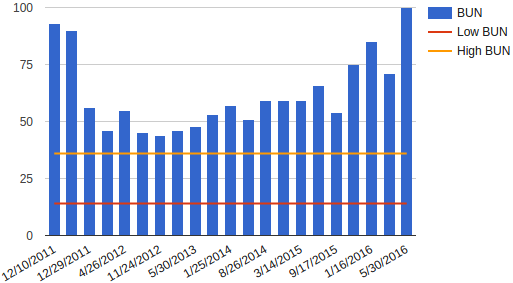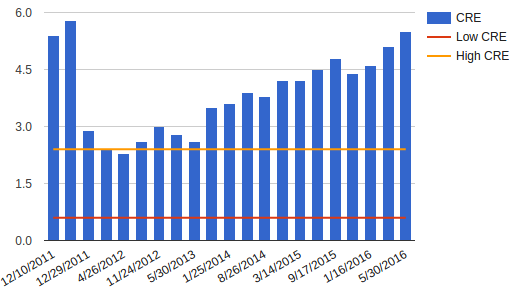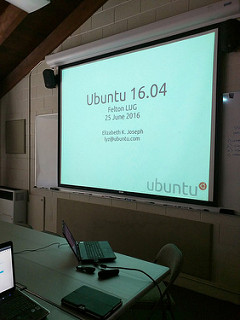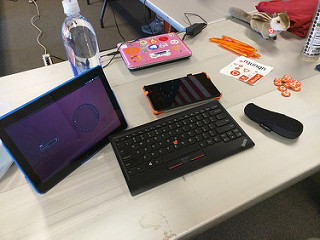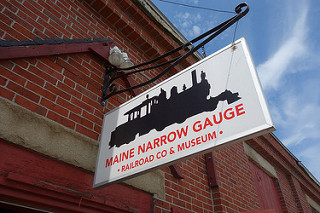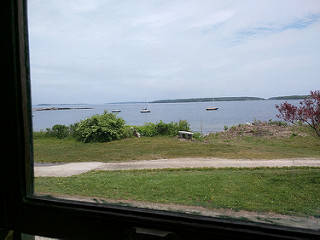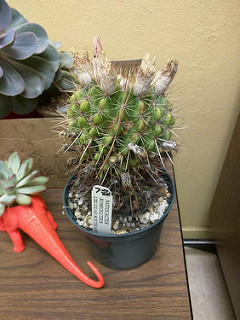Our trip to Maine over Memorial Day weekend was quite the packed one. I wrote already about the trains, but we also squeezed in a brewery tour, a trip to a museum, a wildlife park visit and more.
We took an overnight (red eye) flight across the country to arrive in New Hampshire and drive up to Maine on Thursday morning. We had to adjust our plans away from the trolley museum when we learned it hadn’t opened yet, so we instead drove up to Portland to stop by one of my favorite breweries for a tour and tasting, Allagash Brewing. As a lover of Belgian style ales, I discovered Allagash in Pennsylvania several years ago, starting with their standard White and quickly falling in love with the Curieux. I left Maine before I could drink, and their tasting room and tour didn’t open until long after I moved away, so this was my first opportunity to visit. Now, you can drop by for a tasting flight at any time, but you have to reserve tour tickets in advance. It being a weekday was a huge help here, I was able to grab some of the last tickets for early in the afternoon as we drove up from Kennebunkport.
Our arrival coincided with lunchtime, and since they can’t serve food in their tasting room, they have a mutually beneficial relationship with a food truck, called Mothah Truckah, serving delicious sandwiches that sits in their parking lot on days they’re open. We ordered our sandwiches and wandered inside to eat it with their house beer. The tour itself was your typical brewery tour, with brewery history and tidbits about what makes this brewery unique throughout.

Having been party to hop growing and beer home brewing back when I lived in Pennsylvania, I’m quite familiar with the process, but am really interested to learn how breweries differ. Allagash does a huge business in kegs, with something like 70% of their beer ending up in kegs that are shipped to bars all over the country. The rest goes into one of two main bottling lines, the first of which is all their standard beers, and the second is their sours, which due to their nature require some special handling so they don’t contaminate each other. After seeing the keg and bottling lines, we went into their aging building where we had a series of other brews to taste: White, Saison, Little Brett, Golden Brett. I like Saisons a lot, and the Bretts trended in the sour, and I strongly preferred the Golden. We purchased a bottle of the Golden Brett and Uncommon Crow after the tour. An Allagash bottle opener keychain also came home with me. More photos from the brewery tour here: here.
This pretty much took up our afternoon, from there we stopped by the grocery store to per-order a Spiderman cake for my nephew’s birthday on Saturday and then checked into The Westin in Portland. After a couple snafus with the room choice, we were finally put into a room with a beautiful view of the Portland Art Museum and the harbor. We rested for a bit and then we went out in search of my lobster! We ended up at the locals-friendly J’s Oyster where I was able to order my steamed clams (steamers) and lobster, plus watch the Penguins win the game that put them in the Stanley Cup finals with our beloved Sharks. I slept well that night.
The next morning I let MJ sleep in while I made my way over to the International Cryptozoology Museum. It’s an interesting place for such a museum, but Maine is where museum founder and Cryptozoology legend Loren Coleman lives, so there we were. As I walked into the museum I was immediately met by Loren, who happily obliged my request for a photo together (he gets this a lot). He also signed some books for me, one of which went directly in the mail to one of my fellow cryptid lovers.

I keep talking about cryptids and cryptozoology. Cryptozoology is the search for creatures whose existence has not been proven due to lack of evidence, and cryptids are what we call these creatures. Think the Loch Ness Monster and the various incantations of Bigfoot, but they have a coelacanth as a mascot, since the coelacanth was thought long extinct until it’s modern existence was confirmed pretty recently. The okapi also tends to show up a lot in their literature, being probably the last large mammal to be confirmed by science. To be strictly honest with myself, it’s a pseudoscience and I’m a skeptic. Like many skeptics I like to see my ideas challenged and if I were the less skeptical type, totally would be out there in the wood searching for bigfoot. I can’t, but I want to believe. The museum itself was an important visit for me. A variety of casts of bigfoot feet, lots of kitsch and memorabilia from various cryptids, with Nessie being one of my favorites. They also had exhibits showcasing some of the lesser known and more local cryptids. I think these smaller exhibits were my favorite, since they walked the fine line between seriousness and self-deprecation on the part of cryptid seekers. With the “head of a moose, the body of a man and the wings and feet of an eagle” I’m not sure most people could honestly say they believe that the Pamola actually exists as an animal you may encounter.
The visit to this museum was definitely a memorable highlight of my trip, I’m glad I was able to visit it before they moved to their new location. The museum is closed for a few weeks this summer to do the move, I made it just in time! More photos from the museum here.
After my morning cryptid adventures, we made our way over to Fort Williams State Park, where the very famous Portland Headlight lighthouse is. Our reason was not to see the lighthouse though, we wanted lobster rolls at Bite into Maine. They remain my favorite lobster rolls. Going here is kind of a pilgrimage now.
After lunch we drove up to Freeport to meet up with my family and do a bit of shopping at L.L. Bean. We met up with my mother, youngest sister and my nephew. With my nephew I got my first glimpse at a moose! A stuffed moose.
We had dinner together at Jameson Tavern where I got a beloved slice of blueberry pie, a la mode. We then swung by the L.L. Bean outlet and did one last stop at the main retail store. I ordered a snazzy new travel pouch for toiletries when I travel.
As I wrote about previously, we spent Saturday morning at the Seashore Trolley Museum. Afterwards we swung by the bakery to pick up the cake we had ordered and drove to my sister’s place. The evening was spent with pizza, cake and birthday presents! It’s hard to believe my nephew is almost four already.
Sunday was moose day. This trip marked MJ’s second visit to Maine. I’d always told him tongue-in-cheek stories about all the moose in Maine, and the first time we visited the only moose he saw were stuffed ones at L.L. Bean. This time I was determined to show him a see a real, live moose! Alas, unless you go up to some of the northern or western parts of the state, they are actually pretty rare. In the 15 years I spent in Maine in my youth I could probably count my moose encounters on my hands.
Instead I “discovered” the Maine Wildlife Park. I put discovered in quotes because my mother informed me that I had actually been there as a child. Oh. She did say that it has changed a lot since then, so going again was a different adventure even for her. We met up with my mother, sister and nephew for lunch and then made our way out to the park in the early afternoon.
The park has improved enclosures for the animals, in keeping with modernization of many facilities. They also specialize in caring for wild animals and keeping the ones that can’t survive in the wild, writing: “Many of the animals at the Maine Wildlife Park were brought here because they were injured or orphaned, or because they were human dependent – raised, sometimes illegally, in captivity.” The collection of local animals is worth seeing. In addition to my lovely moose, their most popular exhibit, they have a pair of black bears, several eagles, mountain lions and more. Plus, it was a great place to take my nephew, with him switching between his stroller to running around to see the next animal pretty often.
And I got my moose selfie:
More photos from the Maine Wildlife Park here.
That evening MJ and I enjoyed dinner at Congress Squared at the hotel, and drinks upstairs in their Top of the East bar. With dinner we got to have some fried fiddleheads. So Maine!
Monday was Memorial Day, and that morning we met my family in Portland and went to the Narrow Gauge Railroad, which I already wrote about. The afternoon was spent getting some more lobster rolls and taking pictures throughout Cape Elizabeth, my home town. We rounded out the day with a visit to my old neighborhood, and even stopped for ice cream at the ice cream shop I frequented as a youth.
The evening on Monday concluded with MJ and I having another quiet evening out together, this time going to Eventide Oyster Co. in Portland, not too far from our hotel. As much as I love the Pacific, and living in San Francisco, I still prefer east coast oysters. It was a nice opportunity to sample a larger variety than I’ve had before. The rest of the meal was a couple small plates and cocktails, but it was plenty after that late afternoon ice cream we indulged in.
Tuesday I saw MJ off, as he needed to return home and my mother picked me up at the hotel when I checked out. We spent some time walking around downtown Portland, drifted into some book shops and had some lunch. In the mid afternoon we drove up to her place, where I got to see all her kitties! She has… several cats.
Eventually we went over to my sister’s place where I’d be staying for the rest of the week. On the way she tool me to a tractor supply store, where I marveled at all the country things (“raise your own chickens!”) and realized I’d turned into a city slicker. Hah! I was pretty out of my element.
I spent Wednesday through Friday working from my sister’s couch. My nephew went to his school program in the morning and my sister kept herself busy. I had to work late on Friday as we handled a maintenance window, but otherwise it all worked out. Working from there allowed them to not feel the need to keep me entertained, and I didn’t have to miss much work for my visit. The evenings I spent hanging out with my sister and mother, watching movies, drinking some adult root beer. It was nice to spend time with them.
On Thursday night my mother’s boyfriend took the three of us out to The Red Barn in Augusta. I’d never been to this place before, but they had top notch whole fried clams. Yummy!
Working from my sister’s couch and looking out her window at the forest view was also a nice change of pace. With just some finishing touches needed on my book, I had reached a place where I could finally relax. Being in such a quiet place helped me transition into a more peaceful spot.
Saturday was my flight day. I had planned a whale watching tour with my mother, but after waking up at 7AM and leaving before 8, the tour company called at 9:15 to cancel our 10AM tour! I was terribly disappointed. I’d never been on a whale watching tour, and with how much both my mother love animals it seemed like a perfect way to spend the day together. Since we were already so far down south, we made a detour to the Old Orchard Beach area, where we spent the morning walking around the seaside shops, walking barefoot in the warm sands (it was over 80 degrees out!) and visiting the beautiful historic carousel they have there. We had lunch at Bugaboo Creek steakhouse, and then killed time at the Maine Mall, where I picked up both Star Wars and Star Trek pajama pants, much to my delight.
It was then time for my flight out of little the little Portland jetport. Connecting through Philadelphia I had an easy time getting home, made even easier with a pair of complimentary upgrades!
This trip was a very busy one, but it was a special one for me. I don’t have the opportunity to spend a lot of time with my family in Maine, with my travel and work schedule, and splitting time with friends and family in Philadelphia as well. It was also nice to play the tourist, which I hadn’t felt super comfortable with until this trip. I finally don’t have anxiety about visiting my home town, and can appreciate it all for the beautiful place it is.
More photos from my trip, including some light houses and ocean views and our beach morning in Old Orchard are here.
